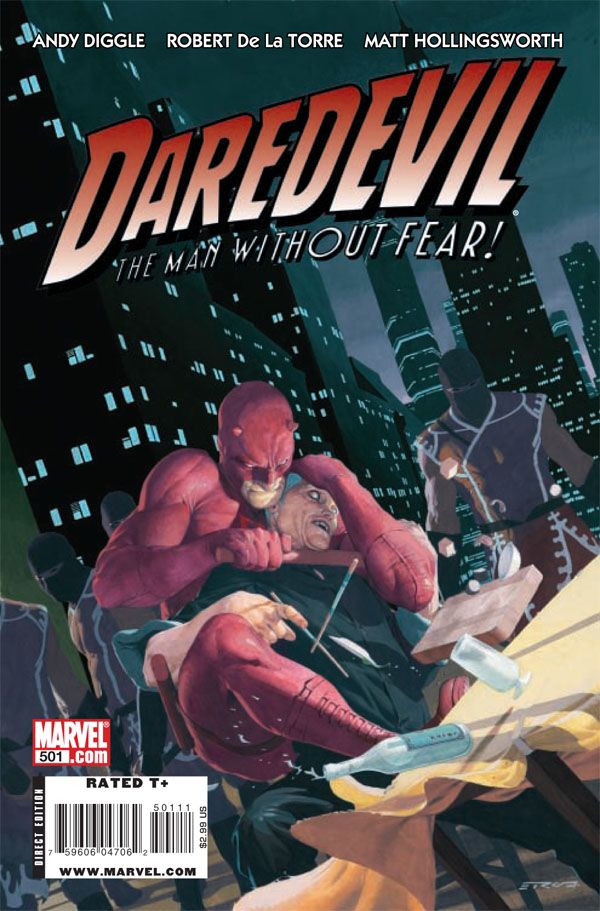I have to hand it to Andy Diggle and Roberto de la Torre, they're making the arrival of a new creative team look like the most natural thing in the world. When Ed Brubaker and Michael Lark arrived on "Daredevil" a few years ago, they were handed a precarious position for Daredevil to be in as he headed off to jail. Brubaker and Lark are paying that forward, with "Daredevil" #500's cliffhanger of Daredevil taking over the organization of ninjas known as the Hand.
Diggle's taken that new direction and run with it, first in last month's "Dark Reign: The List: Daredevil" and now "Daredevil" #501. There's no last-second fake-out, no sudden swerve as Daredevil decides maybe this was a bad idea and runs for cover. Instead, we're getting exactly what we were promised. Daredevil is leading the hand, and all of his former allies are running scared. Foggy and Dakota are trying to figure out how much is their fault. Daredevil's former teacher wonders where he went wrong. And those who helped Daredevil escape the Kingpin's trap are in a less-than-ideal situation of their own.
What's especially nice, though, is that Diggle appears to be playing fair with the reader. Sure, there are moments where you'll wonder if Daredevil really just did what we saw happen, and immediately start trying to find an escape clause. Diggle certainly provides the opportunity for one, but at the same time there's no obvious wink to the audience that there's another scheme going on. We're left to interpret the actions as best we can, with just the right level of ambiguity that anything could be brewing. Diggle also is following up on the small dangling pieces of plot that Brubaker left behind. It's a smooth, seamless transition from one writer to the next, and as a reader I appreciate that Diggle has enough respect for his readers to not do otherwise.
I liked de la Torre's past collaboration with Diggle on "Thunderbolts," but de la Torre's art here leaves his "Thunderbolts" work far in the dust. Maybe it helps that Matt Hollingsworth is applying more subtle colors onto de la Torre's art, but it feels like a much more textured, nuanced creation. There are elements of past "Daredevil" artists in terms of style here (especially Alex Maleev and Bill Sienkiewicz), with the lines running up and down the panels providing an amazing amount of texture and detail. It's a gorgeous book, with even the quiet moments like Daredevil crouching over a cityscape while talking to a mentor taking on a high level of beauty. De la Torre is able to switch from scenes like that to sudden explosions of action so easily that I'm convinced that he, like Diggle, was the right choice for "Daredevil."
"Daredevil" #501 is a great start for the Diggle and de la Torre creative team, and I think people who read the book under Brubaker and Lark (or Brian Michael Bendis and Alex Maleev, for that matter) will be happy with the transition. It's nice to see this book continuing to get such respect from Marvel. Daredevil may not have a mega-blockbuster movie franchise, but it's still getting all the care and pedigree that it deserves.

